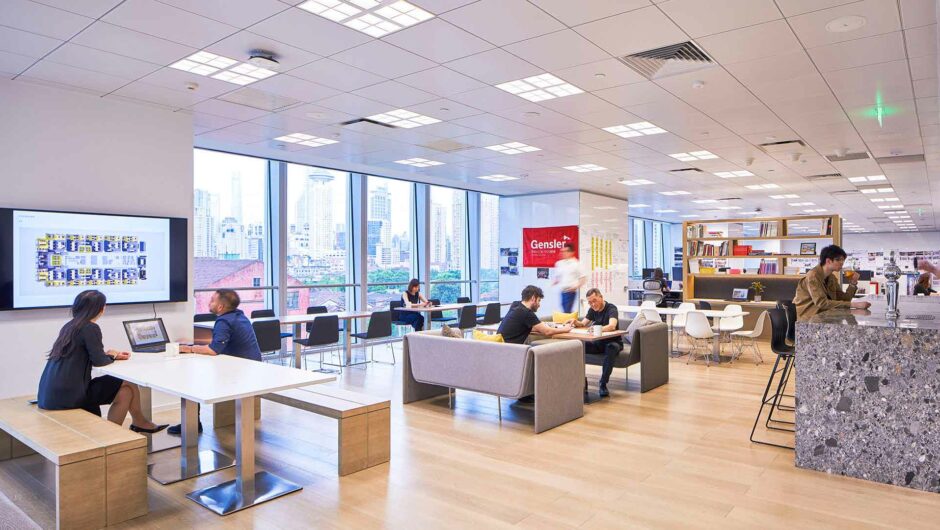How does the workplace experience need to evolve to attract and retain talent in today’s competitive market and into the future?
The nature of work is changing and reshaping our cities. Urbanization is at an all-time high with more than half the world’s population now living in cities. By 2030 there will be over 40 megacities with populations of 10 million or more.
We brought together a panel of business and design leaders to share their perspective and insight on workplace experience trends and the future of work, including:
- What employees expect in today’s experience economy
- How a “mobile” workforce can be a connected workforce
- Tips for managing change in the workplace
Watch the recording from our event, or keep scrolling to read the highlights:
While much research and attention is directed at global organizations and large employers, how can local companies in smaller cities and towns compete for talent on the same scale as large cities? What amenities and perks can be offered similar to that of a larger company?
By learning from the workplace experience trends occurring in larger metro areas, we can understand the expectations of the talent that we want to recruit for positions in smaller communities. In some cases, quickly expanding the talent pool may be achieved by developing choice and flexible working environments.
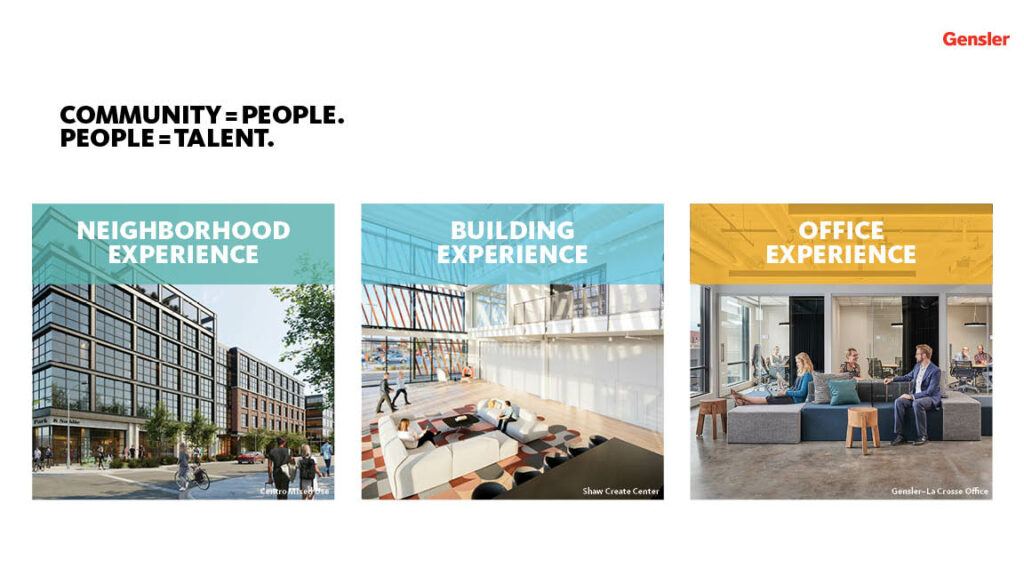
We’ve found that when it comes to talent attraction and retention, workplace experience is the key for continual growth and engagement. There are four design and strategy trends that can influence experience in the workplace.
- The Neighborhood Experience
- The Building Experience
- The Office Experience
- The Human Experience
1. The Neighborhood Experience
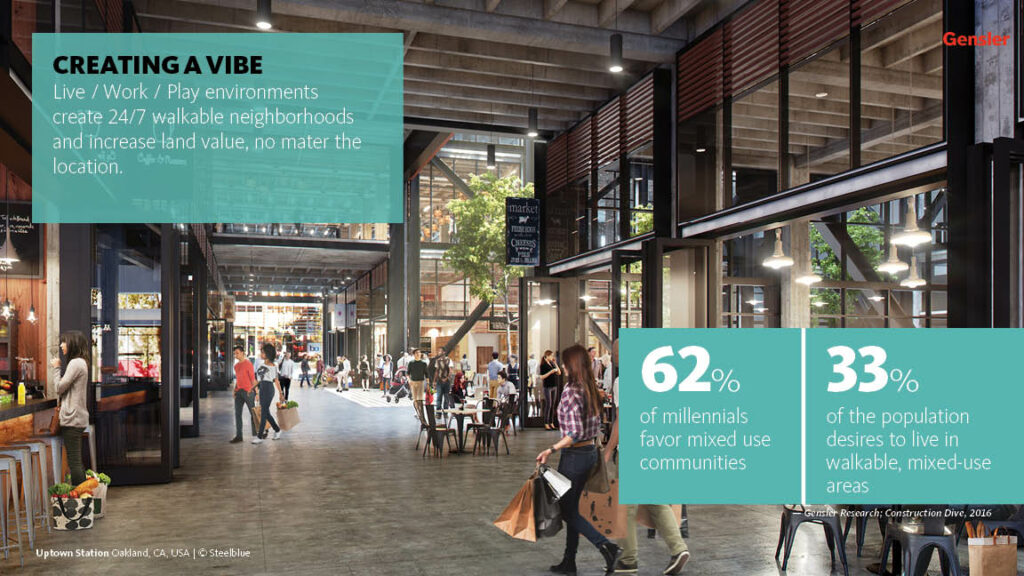
People tend to frequent spaces that are active and diverse. It’s all about the vibe. This is why the spaces we move through as we travel to and from work are almost as important as the office space itself. Commercial office buildings are adding more amenities to improve the experience of the space and attract tenants. This is especially key if they are located in a more remote area where people can’t walk to nearby café’s or services.
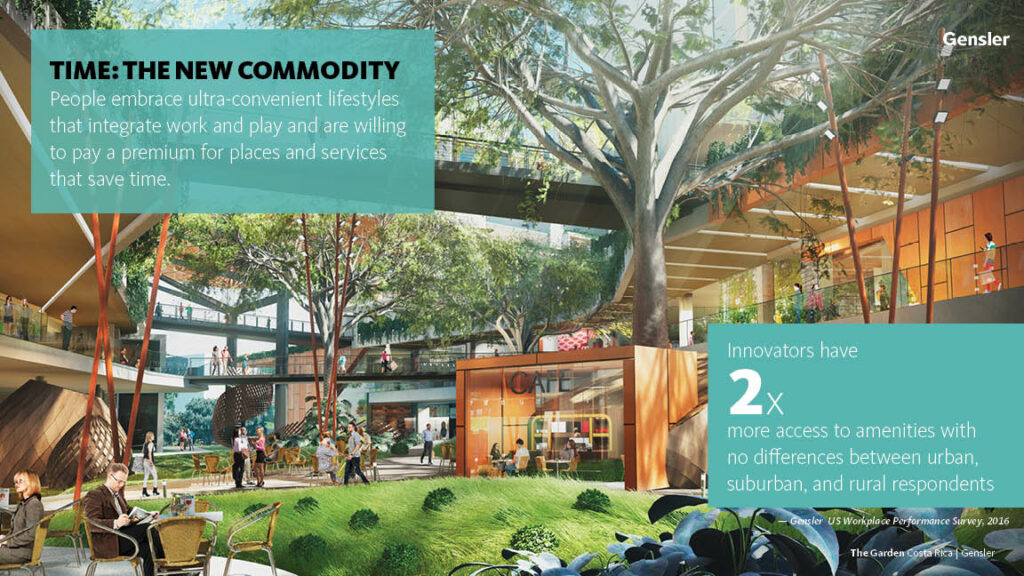
If it’s not possible to have your company in an amenity rich building, let the neighborhood work for you. Locating an office near the services and amenities people need surrounding the work day not only provides convenience for staff, it helps the local economy as well.
2. The Building Experience
As for the building itself, we’re seeing a trend toward design solutions that drive toward connectivity. Talent, especially our younger talent, craves connections. Research has shown that the probability of knowledge exchange is directly related to the proximity of workers. There is a 5% probability of chance meetings when workers are separated by floors and there is a 95% probability when workers share the same floor.
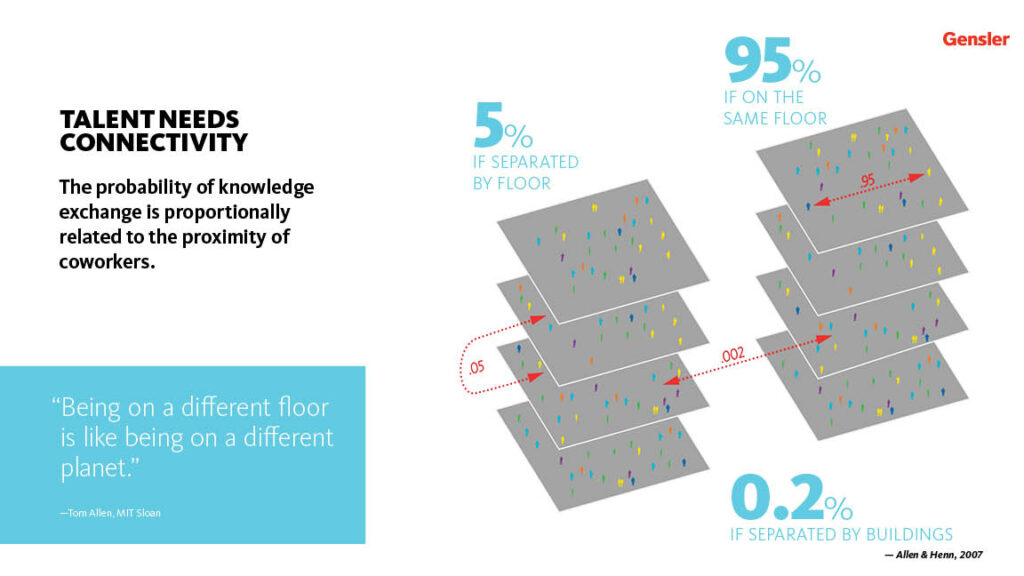
Spatial considerations are one way the organization can help facilitate the transfer of institutional knowledge from those exiting the workforce to our younger generations.
So how does connectivity look as actual design solutions from the buildings perspective?
- Offset cores: Moving the elevators and stairs to the edges rather than breaking up the floor
- Large open floor plates for greater density and flexibility of space types
- Open site lines: internal connecting stairs create a sense of community when spanning floors is necessary
- More outdoor space: research has proven that outdoor connections reduce stress, support wellness, decrease sick days and boost productivity
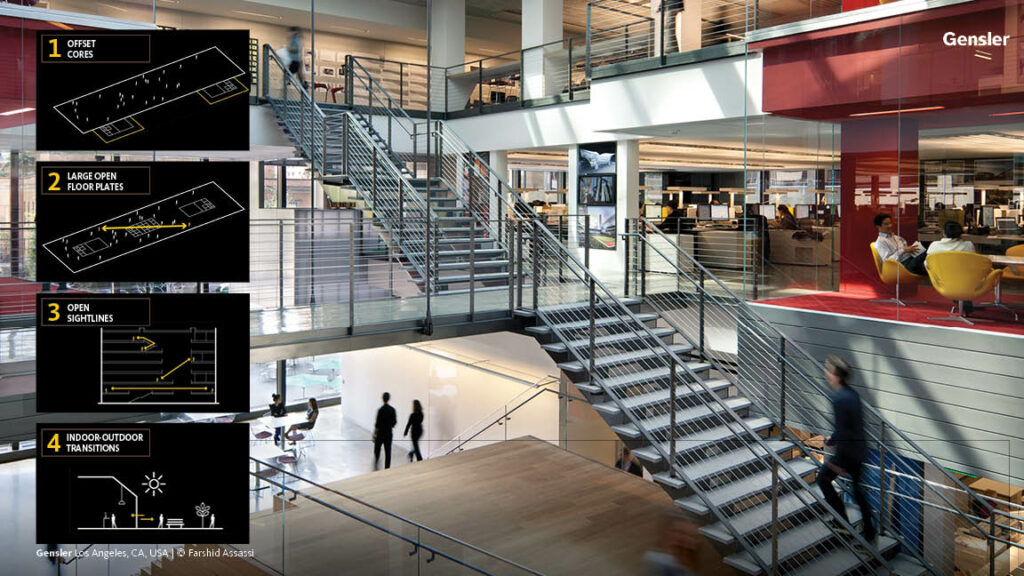
3. The Office Experience
Our research shows that seventy three percent, or four out of five, U.S. workers reports a poor experience at work. Creating an employee experience that is well aligned and connected to the mission and purpose of the organization can increase loyalty and moral and ultimately be good for business.
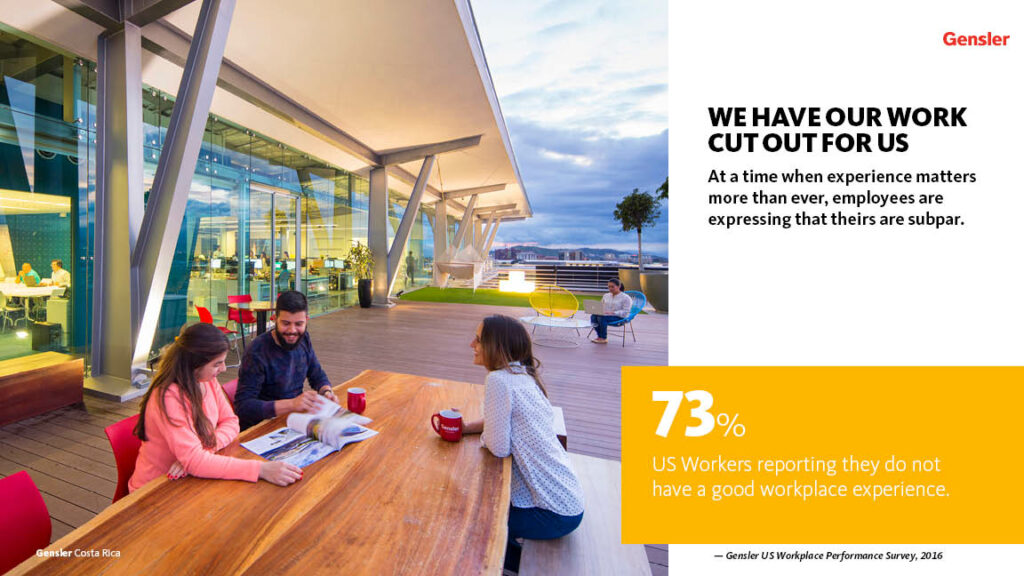
One way to communicate purpose is by making it part of your brand and expressing it visually throughout the office.
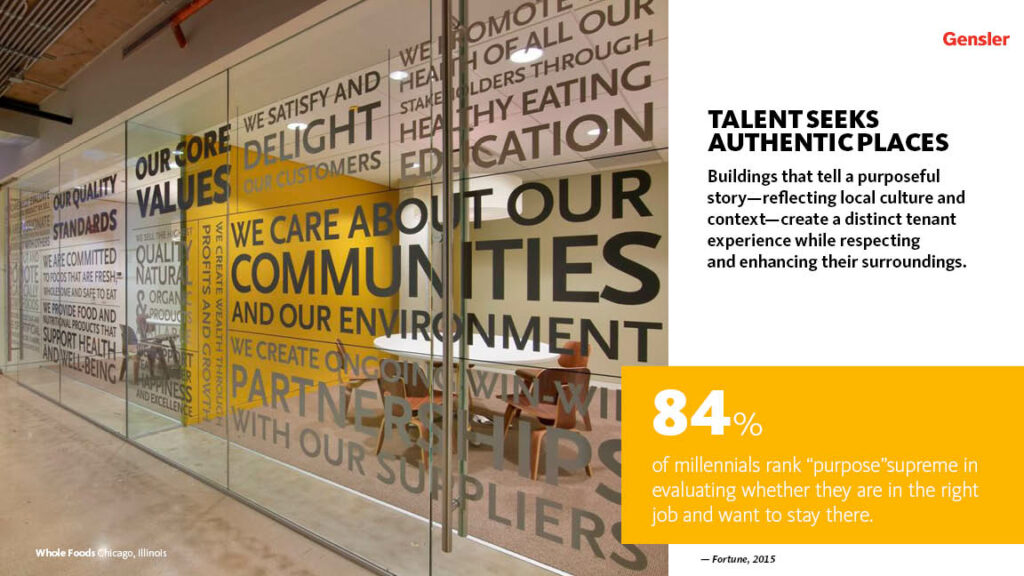
Other workplace experience trends center around offering people choices:
- Offering a variety of support spaces, including private and public spaces
- Soft seating versus formal board room style conference spaces
- The right technology equipment for connecting wirelessly and virtually
- Considerating the impact of light and noise
- Desks that give a choice to sit or stand
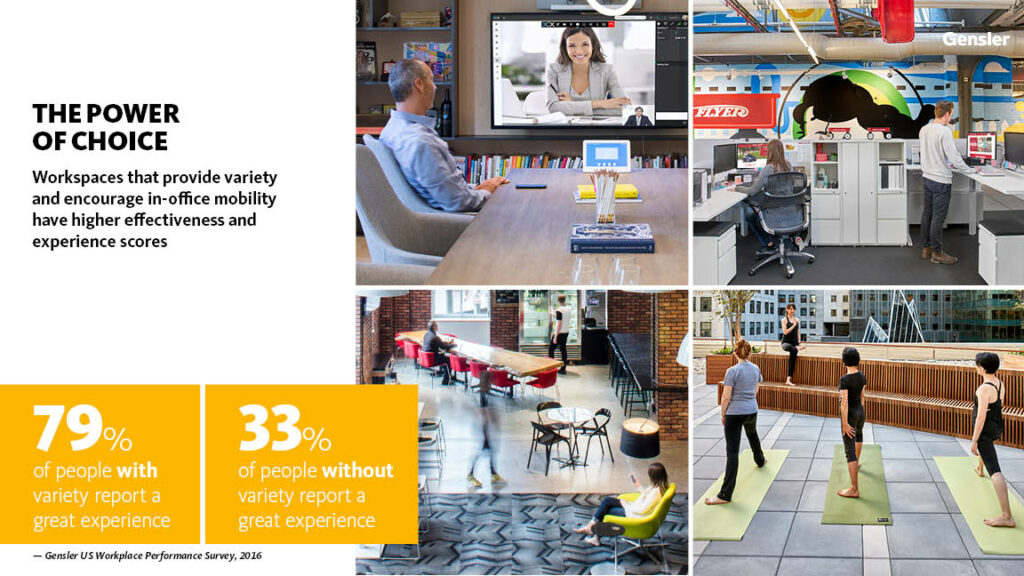
4. The Human Experience
Our research has shown that talent, especially knowledge workers, want more choice and flexibility on when and where to work. Those that have it tend to be better performers with increased retention rates.
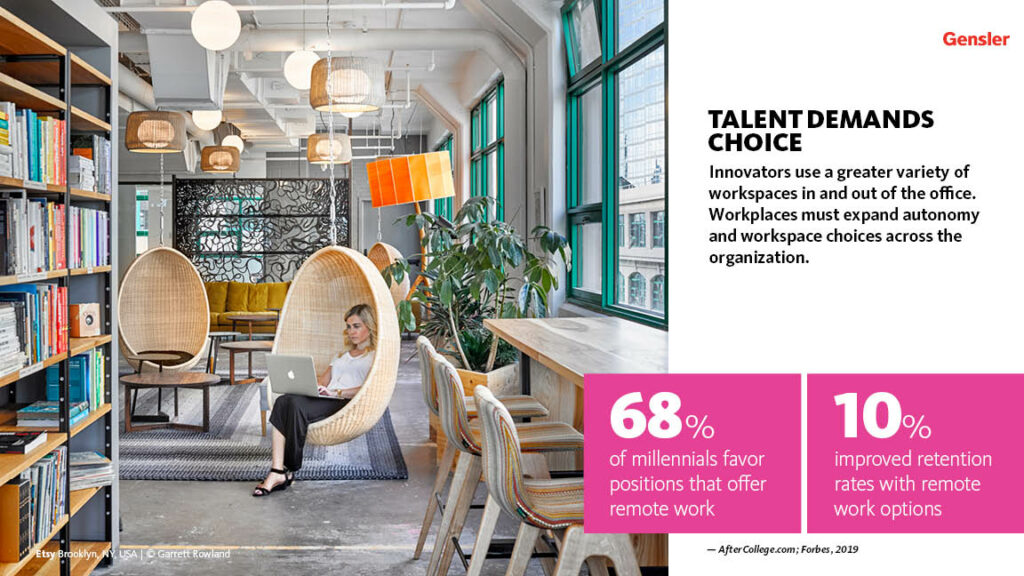
A recent report from SHRM on “Employee Benefits” reported that remote work continues to rise in popularity as a benefit:
- Ad-hoc telecommuting is offered by 69 percent of organizations
- Part-time telecommuting, offered by more than 40 percent of organizations, is up five percent from 2018
- Full-time telecommuting is offered by more than one-quarter of companies
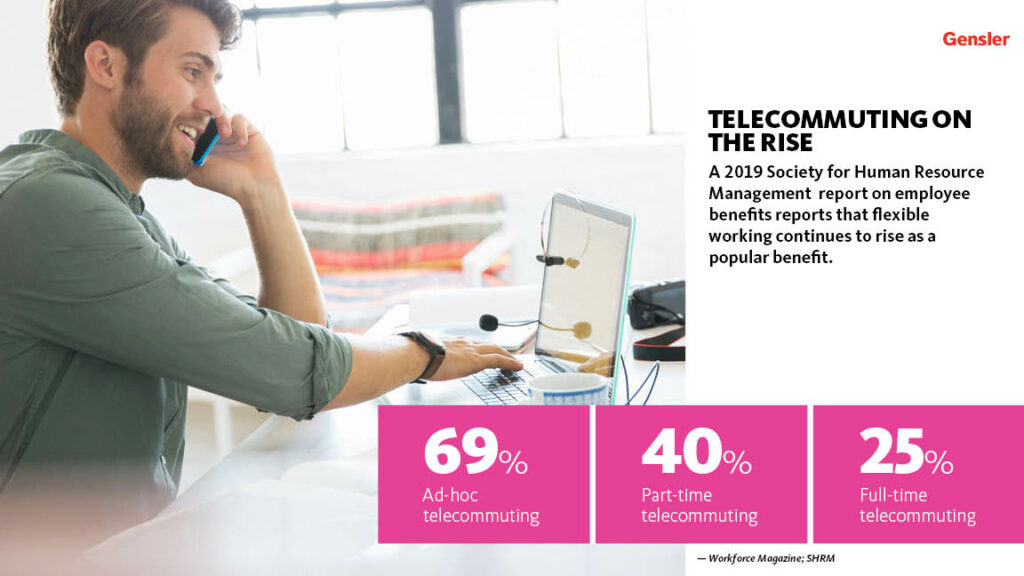
What does this mean exactly?
From what we see across the organization we work with, there is a huge spectrum between being assigned to the same desk 40 hours a week and being remote and working from home 100% of the time on the other end.
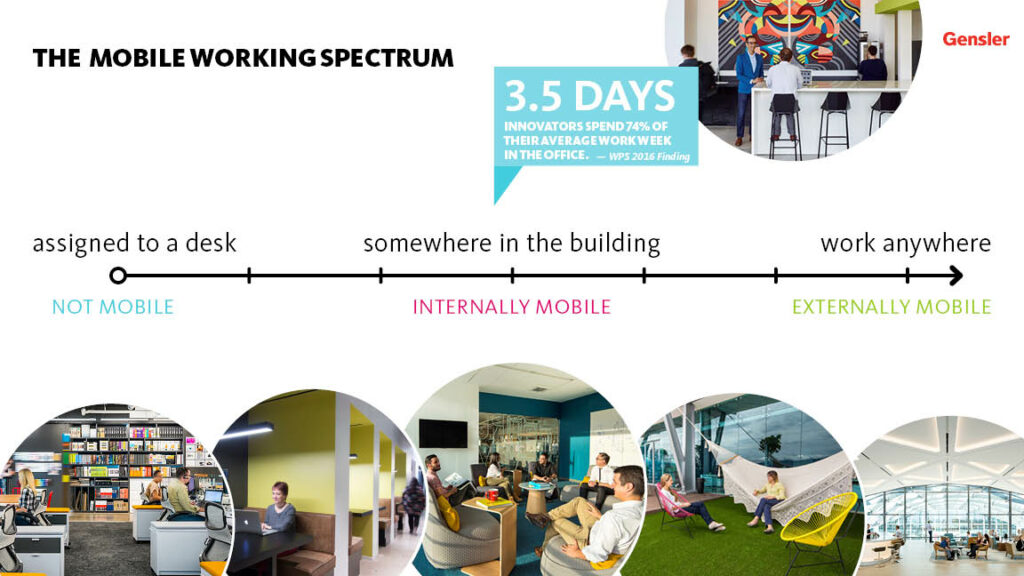
It’s beyond just giving someone lap top and letting them move around. There are a multitude of ways to provide flexibility and choice from a spatial perspective. At the heart, success requires a supportive culture of choice and flexibility.
Learn more about planning and managing a free address workplace >


